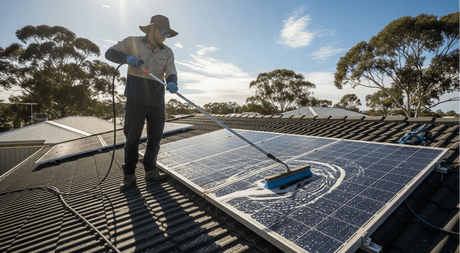Solar panels have gained significant popularity as a source of renewable energy in Australia due to various reasons, such as abundant sunshine, government incentives, and decreasing costs of installation. When homeowners plan to go solar, they often ask one question: "What solar panel size to choose for their homes?"
The size of a solar panel not only means its physical dimensions, but it also determines how much electricity it generates, how many panels you will need, and the space required on your roof for successful installation. Choosing the right size solar panel is crucial for long-term savings and system efficiency. In this article, you will learn everything associated with solar panel sizes in Australia.
Why Does Solar Panel Size Matter?
The size of solar panels plays a crucial role when designing an optimal system to meet your energy needs. Let's look at some key points.
- Solar panel dimensions (width and length) determine how many solar panels you can install on your roof, considering the available space.
- The input of a solar inverterdictates how many solar panels you can connect to this device. Some inverters are more compatible with certain panels than others.
- Wattage or output power per panel determines how many solar panels you need to fulfill your energy needs.
The weight of solar panels, along with their dimensions and sizes, also matters. For example, storms, strong winds, and heavy rain are part of Sydney's climate. If you live in this city, you will need appropriately weighted and durable panels to deal effectively with harsh weather conditions.
Solar Panel Sizes in Australia: An Overview
Solar panels are available in different types for different purposes, including residential, commercial, and off-grid living. Let's get into further specifics of each type of panel.
1. Size of Standard Residential Solar Panels
If we talk about the residential sector in Australia, 120 half-cut cell or 60-cell technology is used to manufacture solar panels. The average solar panel dimensions are 1.7m x 1m (1.7m tall and 1m wide). Each panel weighs between 18kg and 22kg. The output power of residential solar panels is between 300W and 420W and is suitable for fulfilling electricity needs. These panels are considered ideal for smaller roofs.

2. Commercial Solar Panel Sizes
Utility-scale or commercial installations use 144 half-cut cell or 72-cell technology panels. These panels are larger in size compared to standard residential solar panels. They are 2m tall and 1m wide and weigh around 25kg per panel. As far as their output is concerned, it ranges between 450W and 600W+. If you want to install solar panels on your large solar farm or commercial building, these panels are an ideal choice.

3. Off-Grid and Portable Solar Panel Sizes
If you need suitable solar panels for boating, camping, or caravans, look no further than portable solar panels. Australians often select foldable or smaller panels for these purposes. If we talk about the output power of portable solar panels, it is between 50W and 200W. Travelers prefer to use flexible solar blankets. If you want to buy durable solar blankets at competitive prices, explore the collection available at Renogy.

Are Larger Solar Panels Better?
Bigger solar panels have higher cell count and increased surface area, which is why they generate more power. However, larger panels may not always be the best choice for installation. Shading, structural capacity, and roof size must be considered while installing bigger panels.
If your roof is small or has irregular shapes, installing multiple small solar panels will offer better efficiency and improved flexibility. Remember, it is crucial to get assistance from a licensed and experienced technician to know whether smaller or larger panels perfectly match your property layout and power requirements. Simply put, smaller and bigger panels may perform well in different conditions.
Solar Panel Size vs. Output Power
Commercial panels produce more power (450-600W+) than residential solar panels (300-420W), as mentioned earlier. Buying higher-wattage panels means you will need fewer solar panels to meet the same energy needs.
As far as the solar panel efficiency in Australia is concerned, most panels come with 15-23% efficiency ratings. High-efficiency solar panels generate more electricity and need less space to install. This is why they are considered the best choice for homes with limited space on their roofs.
Abundant sunshine makes Australia one of the best countries for solar energy. On average, homes in Australia receive peak sunlight for 4 to 6 hours, which is tremendous. However, the exact peak sunlight hours vary depending on your location. For example, homes in Perth receive more sunlight per day compared to homes in Melbourne.
It shows that the solar panel size alone can't do everything. You also need to consider peak sunlight hours, shading, and panel efficiency in parallel.
What to Consider When Choosing Solar Panel Size in Australia?
Now that you are familiar with the sizes of residential, commercial, and portable solar panels, it is time to learn how to choose the right size panel for your home. Below is a list of a few things to consider.
1. Energy Requirements
First, determine your energy needs before you invest in panels. You can easily find your power requirements from electricity bills by calculating the average energy consumption of the previous year. The average consumption of an Australian household is between 15kWh and 25kWh.
If you have a small family, a 5kW solar system would be enough to meet your energy needs. It consists of 14 to 16 solar panels, depending on the output power of each panel. In contrast, a 6.6kW to 10kW solar panel system would be required for a larger household.
2. Layout and Roof Size
If your house has a north-facing roof, it will receive maximum sunlight per day. On the other hand, fewer high-efficiency panels may be required for shaded or smaller roofs. In simple words, installing larger panels on smaller roofs is not a good choice.
3. Cost Per Watt and Budget
It is true that larger solar panels generate more electricity per dollar, but high-efficiency, smaller panels are known for saving space. You should create a good balance between long-term savings and upfront cost when choosing the right size panel for your home.
4. Future Expansion and Battery Storage
Future planning always ensures your solar system can fulfill increasing power requirements. If you plan to add battery storage to your system in the future, install slightly bigger solar panels so that they can easily meet your rising energy demands.
Solar Panel Size Comparisons
Let's now compare different solar panel sizes and understand what they are best for.
1. Residential vs. Commercial Solar Panels
Residential panels can generate 300-420 watts of power, as mentioned earlier. They are easy to install and compact in size. At the same time, commercial panels can produce 450-600W of power. They are larger in size and ideal for big spaces.
2. Standard vs. Compact High-Efficiency Solar Panels
In terms of solar panel dimensions, compact panels are small, but they generate more power than traditional solar panels due to their higher efficiency. These panels are ideal for Australian homes that have limited space on the roofs.
3. Portable Solar Panels
These panels are great for Australians who travel with boats, RVs, or caravans. They are foldable and come with lightweight structures. This property makes portable solar panels suitable for off-grid living.
How Many Solar Panels Do You Need to Power Your Home?
Do you want to install a home solar system? Don't know the number of panels required to meet your energy needs? Below are the steps you need to follow to calculate the number of panels you need.
Step 1. Calculate Your Energy Needs
Just review your utility bill to see how much energy you consume monthly and daily. It will help you estimate the number of panels needed to run your home appliances. If your requirements are 20kWh per day, a 6.6kW solar system is the one you need.
Step 2. Match Your Needs with the Solar Panel Output
Once you know your energy needs, match them with the output of your solar panels to see if they can meet your requirements. Suppose you have bought 370W panels, each of which generates around 1.5kWh per day. In that case, you will need 18 solar panels (370W each) to install a 6.6kW system.
Step 3. Decide the Location
The number of panels required largely depends on your location. For example, Brisbane and Perth are two of the sunniest places in Australia, which is why they need fewer panels to achieve a certain output power. On the other hand, Melbourne homeowners may need more solar panels to achieve the same output, as this city receives sunlight for fewer hours per day.
For example, if you want to install a 6.6kW solar system with 370-watt panels, you can calculate the number of panels using the formula below.
Number of Panels = Total Rated Power of Solar System / Panel Wattage
= 6600 / 370 = 17.8
It means that you need 18 solar panels to fulfill your energy requirements.
Practical Tips for Australian Homeowners
Following the tips below will make sure that you buy premium-quality solar panels from trusted brands like Renogy and have them installed properly.
- Always balance performance, cost, and aesthetics when choosing the right solar panel size.
- Get your roof inspected by a professional installer before installing your solar system.
- Compare solar panels of different brands to pick a high-quality product.
- Ensure you choose CEC-approved panels.
Final Thoughts
Solar panel size requirements can be different for different homeowners in Australia, as it all depends on your power consumption, location, roof space, and budget. If your home receives a lot of sunlight, you can meet your energy needs even with smaller solar panels. A 6.6kW solar panel system is ideal for most homes to fulfill their power requirements, as it creates a good balance between efficiency and affordability.
If your house has a limited space on the roof, consider installing compact, high-efficiency solar panels. In contrast, larger or commercial-sized solar panels are built for businesses or bigger properties. It is crucial to consult a Clean Energy Council accredited solar installer before you make a decision and invest in solar panels. He/she can better assess your requirements and available space and provide you with a customized solution so that you can get the most out of your investment.
FAQs
Do larger solar panels generate more electricity?
Yes, generally, bigger solar panels produce more power, but considering the panel efficiency is also important.
What solar panel size is best for smaller roofs?
If you have a limited space on the roof, high-efficiency compact solar panels (350W to 420W) are a great choice.
Can I use different solar panel sizes in my system?
Mixing different solar panel sizes is possible with optimizers or micro-inverters. However, it is not a good choice and is not recommended.


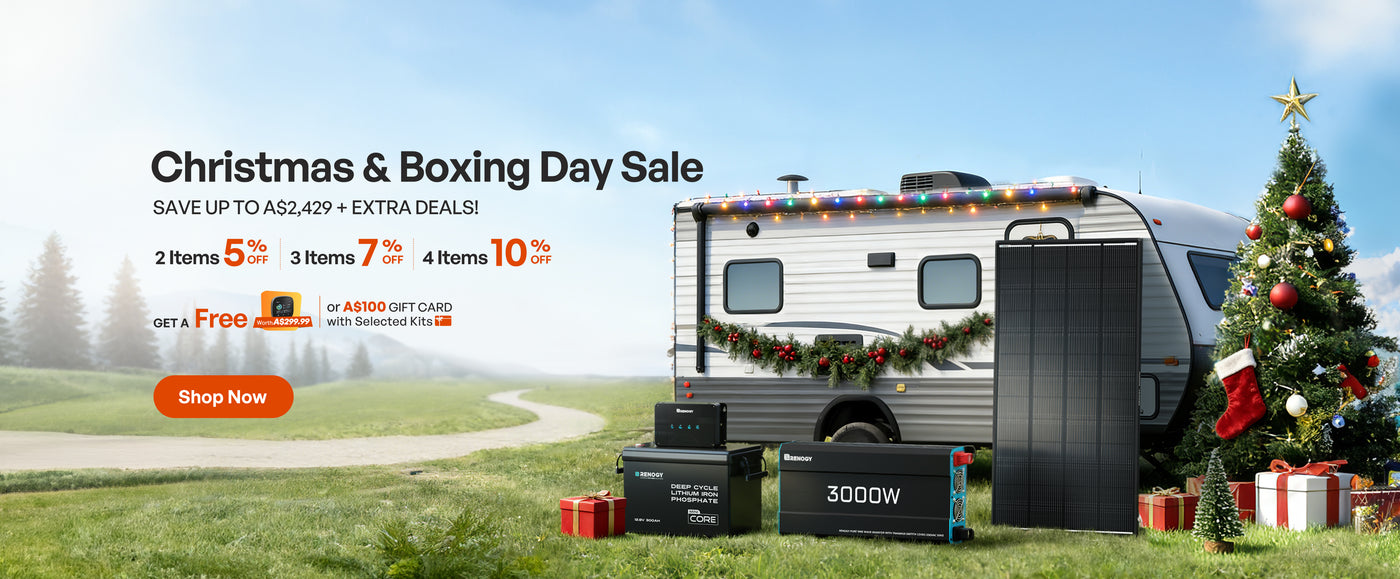

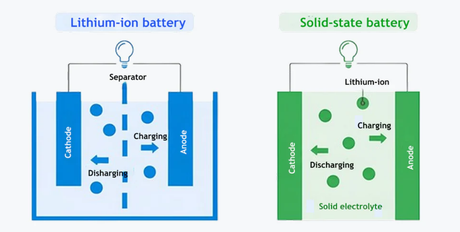
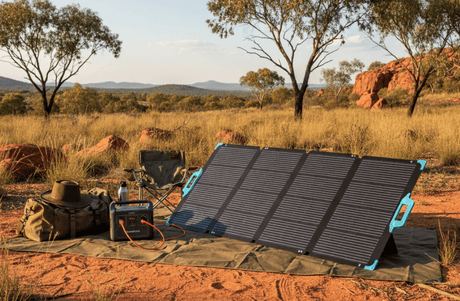
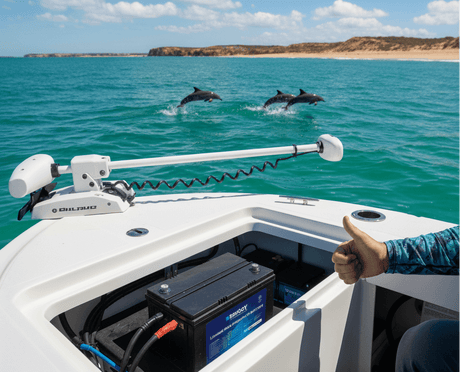
![What Is a DC to DC Battery Charger [Comprehensive Guide]](http://au.renogy.com/cdn/shop/articles/IMG_3829_bd86de74-31d6-49fd-b9d5-265bb723091d.jpg?v=1757582605&width=460)
